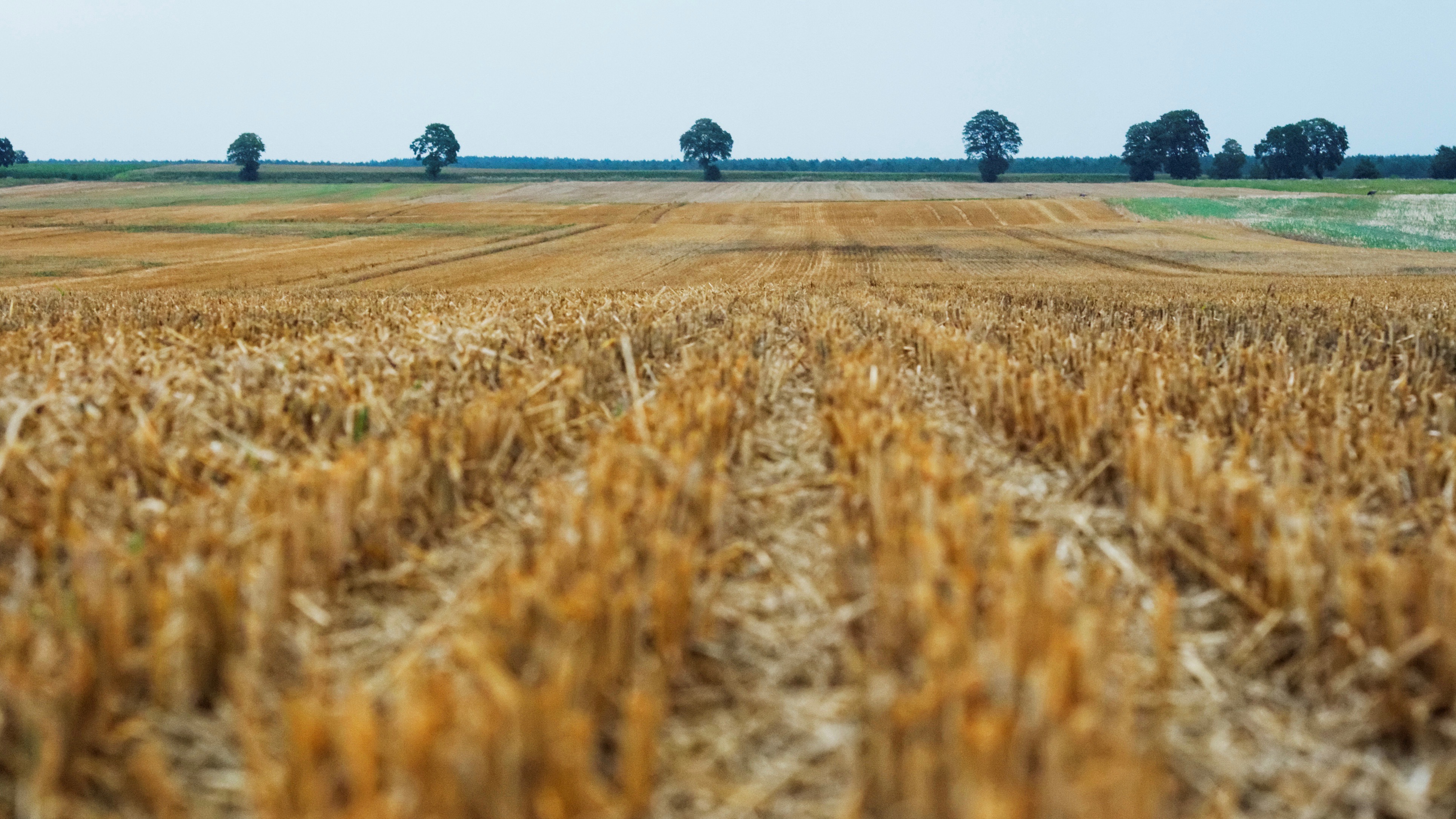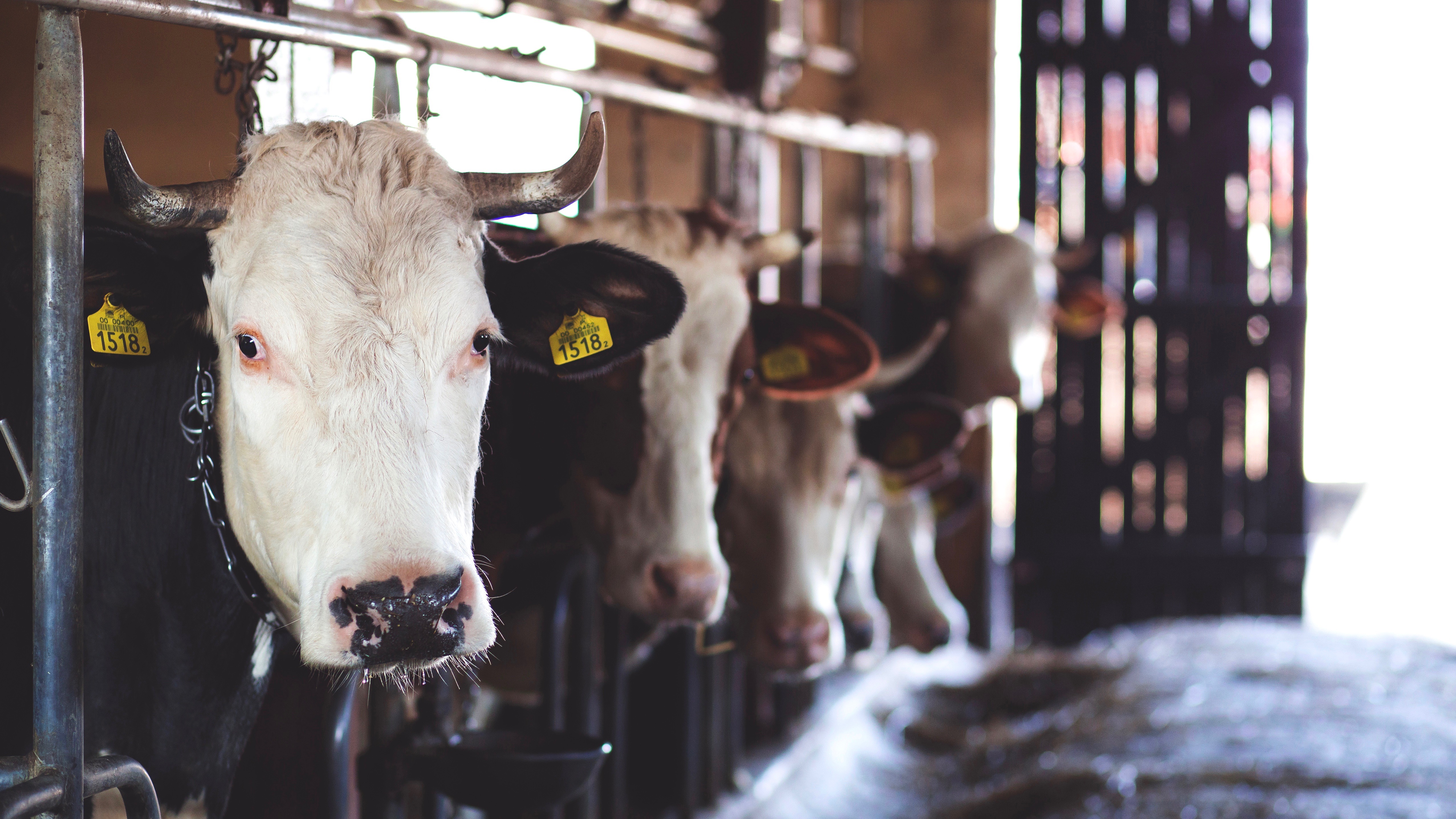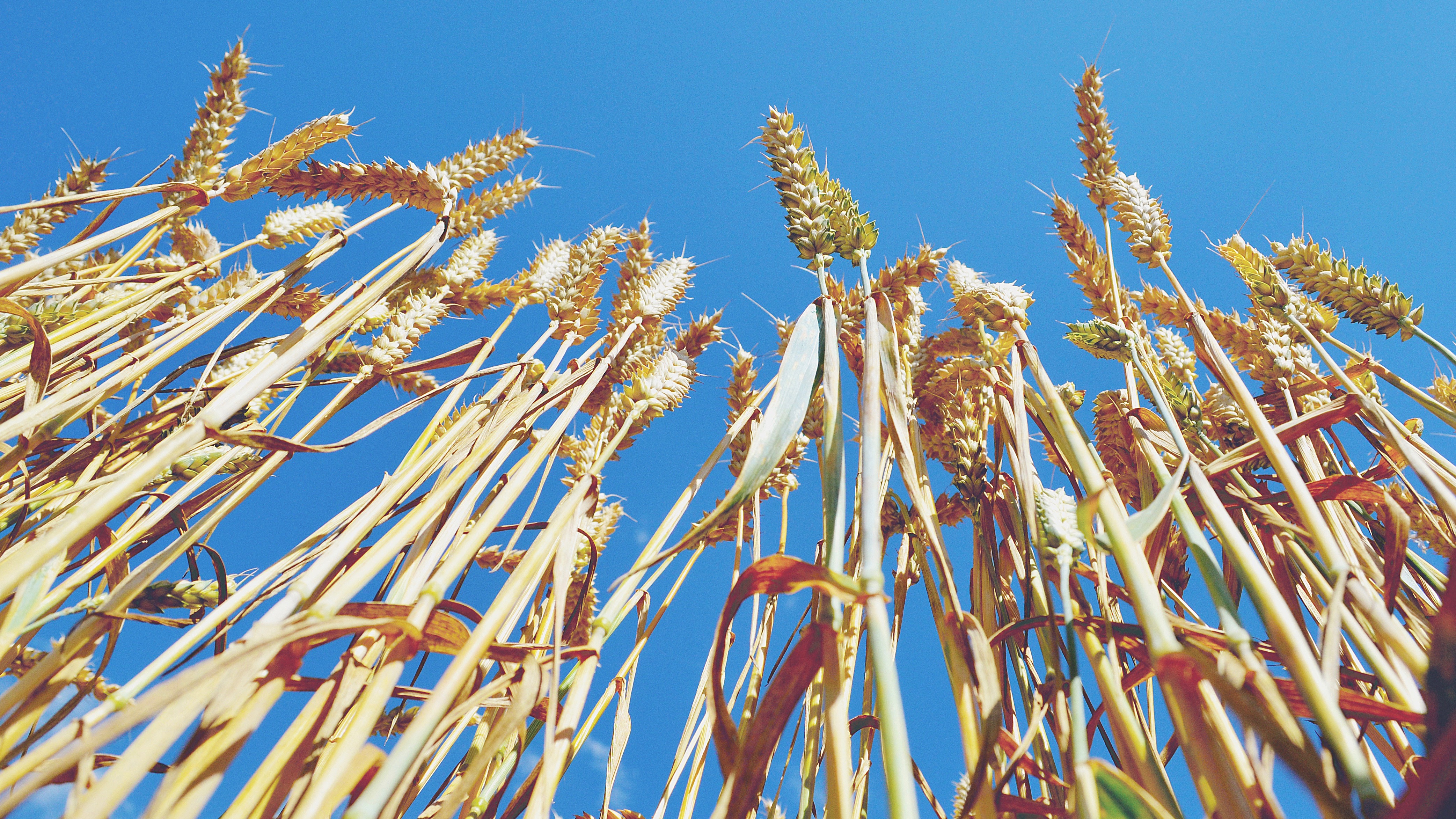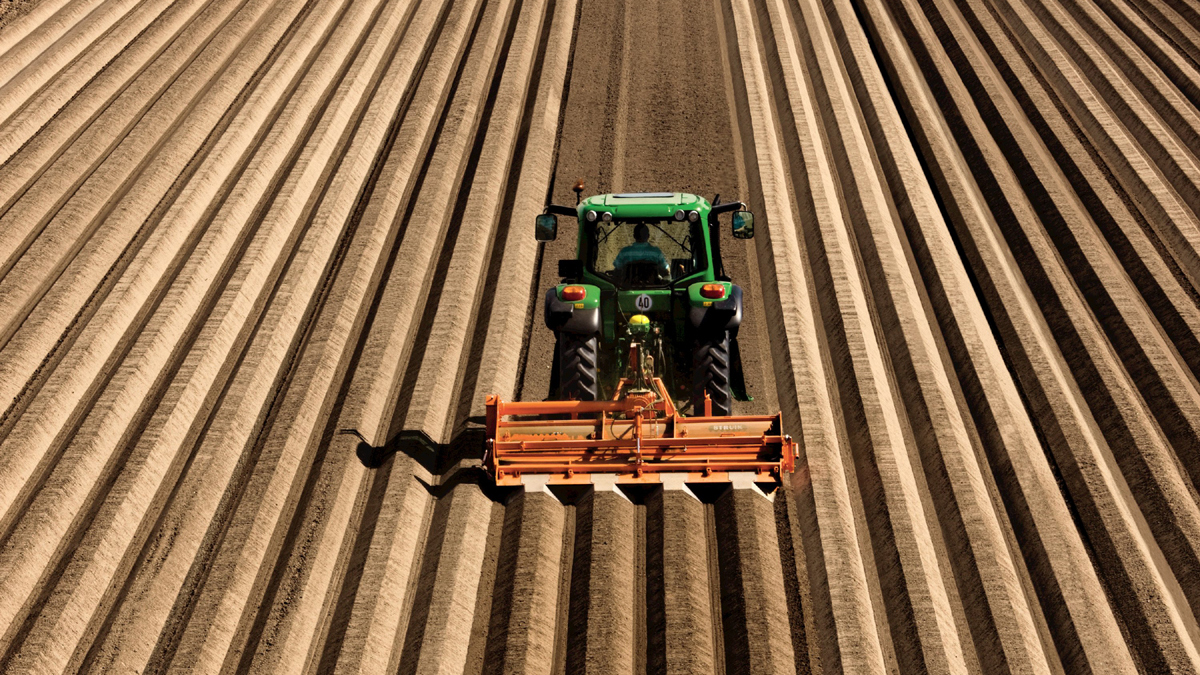
Humanity has a major food problem. The world's population is expected to increase significantly over the next three decades, but our capacity for food production will struggle to keep pace.
Although global fertility rates are actually falling, a general increase in life expectancy will mean a steady increase in headcount during our lifetimes. One 2015 UN DESA report claims the world's population will hit 9.7 billion by 2050 – an increase of some 2.3 billion over today.
Of course, a general rise in life expectancy reflects a higher standard of living for more of the world, which is cause for celebration.
But the prospect of having 33% more mouths to feed, colliding with the dual threats of global warming and the overuse of pesticides, means fresh thinking is required in the realm of agricultural technology.
Space: the final food frontier
The simple fact is that the Earth is only so big, and there's only so much space to grow crops and breed livestock.
"Over the last five decades, improved farming techniques and technologies have helped to significantly increase crop yields, along with a 12% expansion of farmed land use," reads a 2013 report on food waste from the Institution of Mechanical Engineers (IMECHE).
It adds: "However, with global food production already utilising about 4.9Gha (global hectares) of the 10Gha usable land surface available, a further increase in farming area without impacting unfavourably on what remains of the world's natural ecosystems appears unlikely."
Sign up for breaking news, reviews, opinion, top tech deals, and more.

Indeed, a recent Friends of the Earth report estimates that the amount of agricultural land the EU requires to meet its food demands is actually 43% more than is available within the EU itself.
We're fast approaching the point at which it will no longer be an option to simply plant more crop fields and breed more cattle – not without adversely affecting the wider ecosystem, at least. What's needed, then, is an improvement in the efficiency of our current farming methods.
The world produces about four billion metric tonnes of food per year, but wastes up to half of this. Major factors in this wastage have been "poor practices in harvesting, storage and transportation", according to IMECHE.
Food producers are responding to the challenge, though. In developed countries, wastage is being massively reduced through the application of AI and machine learning technologies.
Hi-tech farming
Large-scale farming in affluent countries has been partially automated for a number of years now.
Jack Howard, a Product Sales Specialist with agricultural equipment giant John Deere, tells TechRadar that the company's Intelligent Solutions Group began conducting research into what it calls 'precision farming' as far back as 1997.
The first product of that research came at the turn of the millennium, in the form of the first GreenStar system, which employed GPS to offer a light bar indicator for the farmer to drive to.
It was in 2002, though, that things got really interesting, with the launch of the first AutoTrac system – the automated steering system that's still being used by farmers today, albeit in a much-enhanced form.

Systems such as John Deere's AutoTrac enable huge machines to plant crops in a far more uniform and accurate way than any human driver could manage by themselves. Using a StarFire GPS receiver positioned on the roof of the cab, AutoTrac can guide a tractor to within three centimetres of the line it took on its previous pass.
The advantages for systems like AutoTrac over manual efforts are many. They vastly reduce overlap in agricultural processes such as tilling, planting and fertilising, which in turn reduces the use of chemicals and increases productivity.

They also enable farming to take place even when lighting conditions are less than ideal, and reduce the fatigue on operators – which means fewer mistakes and less wastage.
This use of automated farm machinery is taking a number of forms around the world, to solve various local issues. For example, Australia's SwarmFarm employs automated robot 'swarms' – large groups of smaller automated machines working in conjunction, using a collision avoidance system – to spray crops.
In such a vast, lightly populated country, where sufficient farm labour can be tough to find, this could prove to be an essential tool for maximising food output.
Vision of the future
Another important field of AI that's beginning to have a positive effect on agriculture is machine vision – that is, the field of teaching machines to be able to 'see', and decipher what's being viewed.
Cainthus is a machine vision company based in Dublin, Ottawa and San Francisco. Intriguingly, though, it isn't an agriculture specialist; rather, the company has selected this area as the one in which its work can have the biggest positive impact.
The company has created a facial recognition system than can identify individual cows by their facial features in just six seconds, allowing for the easy monitoring of an entire herd with a minimum of direct human interaction.

Existing 'smart' systems require the use of physical tracking devices, the fitting of which adds unwanted extra stress to the livestock.
Cainthus is also creating an algorithm that can identify early signs of lameness in a cow based on its body shape, and alert the farmer accordingly. It can also detect when cows are fighting over the best feed.
Interestingly, Cainthus is working with another Ottowa-based company called Fermentrics, which is using machine learning to quickly predict the outcome of the fermentation process in cattle feed.
Judging the appropriate composition of cattle feed is more art than science at present, and existing digestibility tests can prove costly.
Fermentrics is harnessing Cainthus's machine vision and AI algorithms to "demonstrate on a per-cow basis the measurable impact of forage selection on feed intake".
It's not just cattle that will benefit from machine vision. Cainthus is one of several companies that's applying the technique to plants, which it's hoped will enable targeted treatment, rather than the blitzing of entire crops with chemicals.
This could lead to more effective disease prevention while simultaneously reducing chemical usage, which would be more cost-effective, and less damaging to the wider ecosystem.
The future of farming
So what might the farm of 2026 and beyond look like?
"I would say that farm would be completely linked over the air – over the internet or satellites – to back in the office, to the smartphones and tablets they're using," says Howard.
The intelligent, largely-automated farm of the future will quite simply generate and process a great deal more data than at present. Howard offers the example of emerging systems that use infrared and thermal imagery sensors to obtain nutrient data about a crop.

"That can be transferred back into whatever farm management software they're running," adds Howard. "Most farms in 10 years' time would be using that kind of technology.
"Being able to foresee what your crop, and what your farm, is going to need in the next two to 18 months based on crop data would bring a lot more security to the farming operation as a whole."
Far from taking control out of the hands of farmers, harnessing the power of AI and machine learning will enhance the decision-making capabilities of the people entrusted to grow our food.
The trouble with farming at present is that it's still something of a gamble, with a number of troublesome variables such as the weather, commodity prices, and fuel prices in play.

The fully networked farm of the future could have direct access to weather satellite systems, with companies like Planet Labs and Spire currently working to democratise such data for the benefit of smaller businesses. This would serve to shift the art-to-science balance of agriculture yet further.
By 2050 the human race quite possibly won't have the capacity to expand its food production in line with a steadily increasing population. By utilising AI to farm smarter, with a higher success rate and less wastage, we hopefully won't have to.
Main image credit: Cainthus

Jon is a freelance journalist who has been covering tech since the dawn of the smartphone era. Besides TechRadar, his words and pictures have appeared in The Telegraph, ShortList, Tech Advisor, Trusted Reviews, Expert Reviews, and more. He largely covers consumer technology, with a particular focus on smartphones and tablets. However, he's also been known to dabble in the worlds of entertainment and video games.